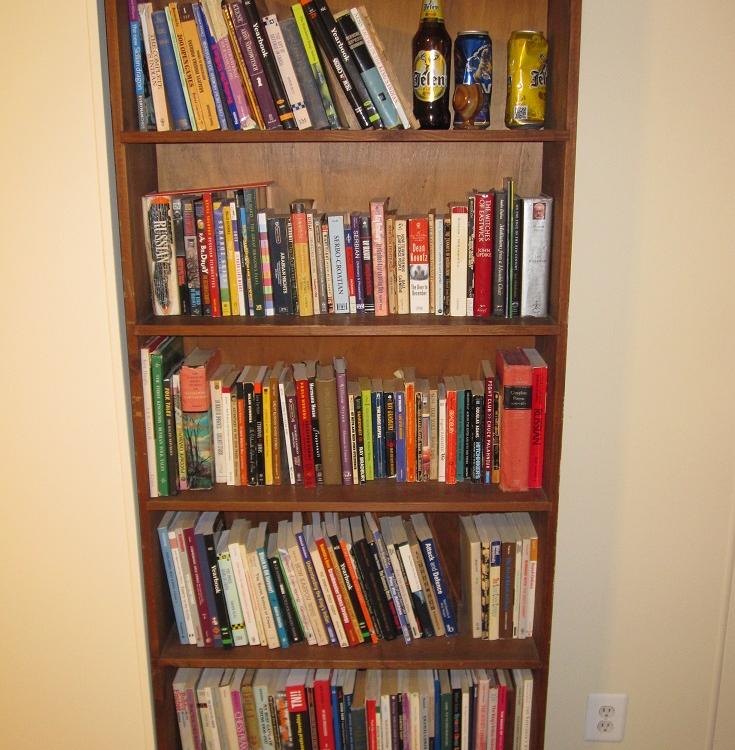
My Bookshelf: "500 Master Games of Chess" by Savielly Tartakower and J. du Mont
For this week's review, I will be covering 500 Master Games of Chess by Savielly Tartakower and J. du Mont. I have had this book since soon after I started playing chess, and it was a big influence on me. I spent many hours playing over the games in it - probably I have played over almost all of them.
This book is exactly what its name implies - a collection of 500 master level games, nothing more and nothing less. It was published in 1952, and the games included range from the 1700s until shortly before the book was published. The majority of the games took place in the late nineteenth to early twentieth centuries. The games are organized into sections by opening, and there is a player index in the back.

There is literally nothing else in this book besides the annotated games. There is no preface, no introduction to each opening, no player or author biographies. I like its minimalist nature. The majority of games take up less than a page - there is very little long analysis and the notes are generally meant to be poetic and simply to explain what is happening in the game. I have the sense that this book - as with many other older books - does not have instruction as its main purpose, but rather entertainment and art. Instead of deep analysis to try to "get to the truth" Tartakower creates an atmosphere of chess as an art and a battle. Most books that are being printed now have the improvement of the reader as their entire goal. They really lean on the reader, lecturing, telling him what to think. This book, on the other hand, does not intrude on the reader's world as much. Nevertheless, you can learn from it while enjoying it.
Where I got it
Sorry, but I have absolutely no idea. I know that I had it from very early in my time as a chess player - definitely by the time I was fifteen. It is literally falling apart by now. The first 230 pages are bound together but not attached to the rest of the book. There is tape holding the spine together, which I put on there at some point.
What's good about it
As I said before, this book does not impinge on the reader's world, does not lecture, and does not try to claim that the author knows "the truth". If it did those things, it would look ridiculous from the current point of view. It simply presents the games, explaining what is happening in sometimes-poetic language, and that is all.
The reader can do what they want with the games. If he wants, he can take a game apart and analyze it for hours. Or he could play through it in five minutes and absorb the patterns. I suspect that the 500 games represent a larger portion of the "master" games played up to that time, since there were not very many tournaments nor many masters in the old days. Nevertheless, you will not have seen the majority of them before. The games were selected for their beauty, and it does not include any boring games. Probably about ninety percent of them are decisive games.
This book is probably best for players rated 1200-2000. However, players rated less than 1200 can read it and stretch their mind, as long as they accept that there will be some things about the games which will be mysterious. And there is no reason why players above 2000 could not appreciate the games as entertainment and a look into the past of chess. I still read it today sometimes.
How it impacted me
As I said, I had this book from nearly my beginnings in chess. I used to play over the games each evening. I am certain that I learned a great many positional and tactical patterns from them.
An Excerpt
How to penetrate into the enemy camp? The manner in which White solves this problem in the following famous game is worthy of a genius.
Any Downsides?
Depending on your point of view, there are many downsides in this book. It is a fairly old book, so the games are old and innocent. You are not going to find the latest theory in here. There are games with obvious holes. There are also inevitable misjudgments by the annotator. Tartakower did not - and could not - put a lot of work into annotating each game, because that would be a huge amount of work and result in a gigantic book.
But these downsides could also be benefits. The annotator mostly leaves you alone to view the games as you like. He doesn't try to claim absolute truth. The games are old, but you get to see classical chess, which everyone should learn before you plunge into the intricacies of the Botvinnik Semi-Slav. Oh, and there are most definitely no comments like, "Houdini evaluates the position as +0.32 for White..."
This book is in descriptive notation. I don't know if there is an algebraic version, but I suspect there is. In any case it's not a problem for me, since the first system I learned was descriptive. However, I agree that algebraic is just better. It can get a little annoying trying to figure out which knight is the "king's" knight at move fifty.
What you should eat/drink while reading this book
Spiced black tea.






